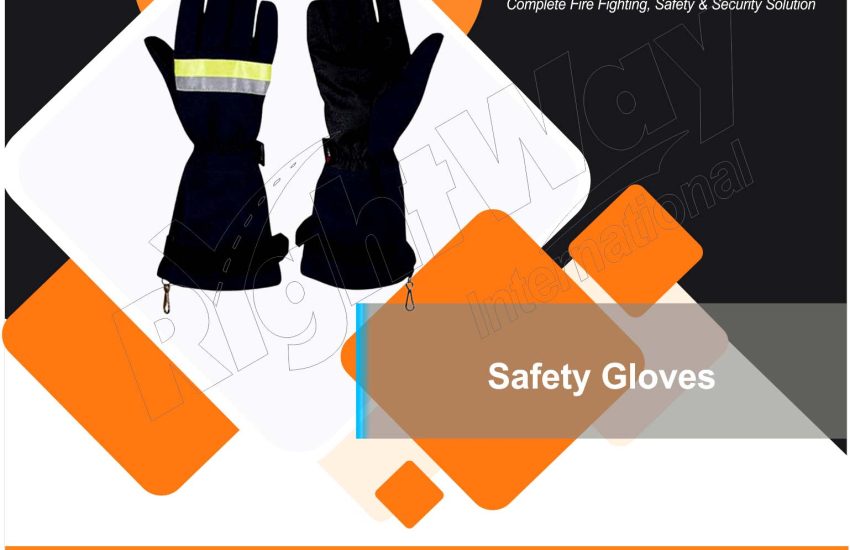Safety Gloves are critical personal protective equipment (PPE) designed to protect workers’ hands from a wide range of hazards encountered in various industries. From sharp objects and chemicals to extreme temperatures and electrical risks, safety gloves play a crucial role in preventing injuries and ensuring a safe working environment. This article explores the importance of safety gloves, their types, features, and best practices for their use and maintenance.
The Importance of Safety Gloves
Safety gloves are essential for several reasons:
- Injury Prevention: They protect hands from cuts, abrasions, punctures, and burns that can occur during manual handling, machinery operation, or exposure to hazardous substances.
- Chemical Protection: Safety gloves provide a barrier against harmful chemicals, reducing the risk of skin irritation, burns, and systemic toxicity.
- Thermal Protection: They safeguard hands from extreme temperatures, including both hot and cold environments, preventing burns and frostbite.
- Electrical Safety: Insulated gloves protect against electrical hazards, reducing the risk of electrical shocks and burns.
- Enhanced Grip and Dexterity: Many safety gloves are designed to improve grip and dexterity, helping workers handle tools and materials more effectively and safely.
Types of Safety Gloves
- Cut-Resistant Gloves:
- Description: Made from materials like Kevlar, stainless steel, or high-performance fibers, these gloves are designed to protect against sharp objects and cutting hazards.
- Benefits: Provides protection from cuts and abrasions while maintaining flexibility and comfort.
- Chemical-Resistant Gloves:
- Description: These gloves are made from materials like nitrile, neoprene, or rubber to resist chemical penetration and provide protection against hazardous substances.
- Benefits: Effective barrier against chemicals, oils, and solvents, preventing skin exposure.
- Thermal Gloves:
- Description: Designed for handling hot or cold materials, these gloves use materials like leather, aluminized fabric, or thermal liners.
- Benefits: Protects hands from extreme temperatures and provides thermal insulation.
- Electrical Insulating Gloves:
- Description: Made from rubber or other insulating materials, these gloves protect against electrical shocks and burns.
- Benefits: Ensures safety when working with electrical equipment and high-voltage systems.
- General Purpose Gloves:
- Description: These gloves are designed for a variety of tasks and provide a balance of protection, comfort, and dexterity.
- Benefits: Suitable for general industrial applications, offering basic protection and improved grip.
- Disposable Gloves:
- Description: Made from materials like latex, nitrile, or vinyl, these gloves are used for tasks requiring single-use protection.
- Benefits: Provides hygiene and protection for tasks involving food handling, medical procedures, or low-risk activities.
Key Features of Safety Gloves
- Material:
- Description: The choice of material affects the glove’s protective properties, including cut resistance, chemical resistance, and thermal insulation.
- Benefits: Selecting the appropriate material ensures the glove meets specific safety requirements and provides the necessary protection.
- Fit and Comfort:
- Description: Gloves should fit snugly without restricting movement, and they should be comfortable for extended wear.
- Benefits: Proper fit and comfort enhance usability and compliance, reducing hand fatigue and increasing productivity.
- Grip:
- Description: Many gloves feature textured surfaces or coatings to improve grip and handling.
- Benefits: Enhanced grip helps prevent slippage and improves control when handling tools and materials.
- Durability:
- Description: The durability of gloves affects their lifespan and effectiveness. High-quality gloves resist wear and tear over time.
- Benefits: Durable gloves provide long-term protection and reduce the need for frequent replacements.
- Protection Level:
- Description: Gloves are designed to offer varying levels of protection based on their intended use, including resistance to cuts, chemicals, heat, and electricity.
- Benefits: Ensures that gloves meet specific safety standards and provide appropriate protection for different hazards.
Best Practices for Using and Maintaining Safety Gloves
- Select the Right Glove:
- Description: Choose gloves that are appropriate for the specific hazards and tasks involved in your work.
- Benefits: Ensures optimal protection and performance for the intended application.
- Inspect Regularly:
- Description: Check gloves for signs of damage, such as tears, holes, or chemical degradation, before use.
- Benefits: Prevents the use of compromised gloves and maintains effective protection.
- Clean and Store Properly:
- Description: Follow manufacturer guidelines for cleaning and storing gloves to maintain their effectiveness and extend their lifespan.
- Benefits: Ensures gloves remain in good condition and ready for use when needed.
- Replace When Necessary:
- Description: Replace gloves that show signs of wear or damage, or when they no longer provide adequate protection.
- Benefits: Maintains safety standards and ensures continuous protection for workers.
- Training:
- Description: Train employees on the proper selection, use, and maintenance of safety gloves to ensure compliance and effectiveness.
- Benefits: Enhances safety awareness and proper glove usage in the workplace.
Conclusion
Safety gloves are a fundamental component of personal protective equipment, providing essential protection against a range of workplace hazards. By understanding the different types of gloves, their key features, and best practices for their use and maintenance, organizations can ensure that workers are adequately protected and can perform their tasks safely and effectively. Investing in high-quality safety gloves and adhering to proper care protocols not only enhances workplace safety but also supports overall operational efficiency.


